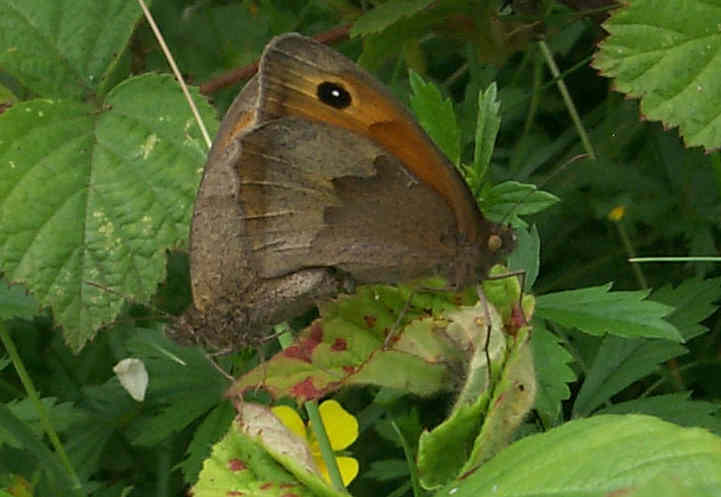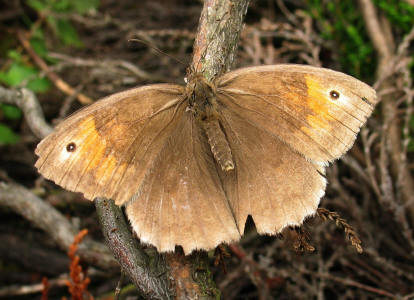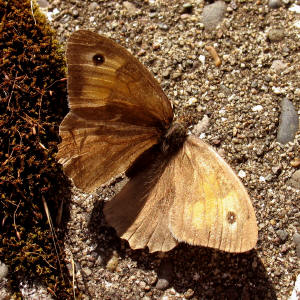Females of the Meadow Brown are unusual as they are more distinctive than the male and are probably one of Britains Commonest Butteflies/.The females eyes stand out against strongly against the large orange patches on the upper wing side . The male is smaller and darker with a less prminent eyes. Like all Browns they have only 4 walking legs.They are seen in upland and lowland meadow and often fly on dull even wet or overcast days
Identification
Medium sized: wingspan 50-55 mm.
Males are a dark dusky, or even velvety, brown on the upper surfaces of their wings with a vague, lighter patch towards the outside of the fore wings. There is single dark brown eyespot with a white pupil towards the tip of the forewings surrounded by a small brown halo.
Females have a warmer brown ground colour on their upper surfaces with a dull orange-brown, broken patch towards the outside of the forewings. There is a prominent black eyespot with a single white pupil towards the tip of the forewings.




